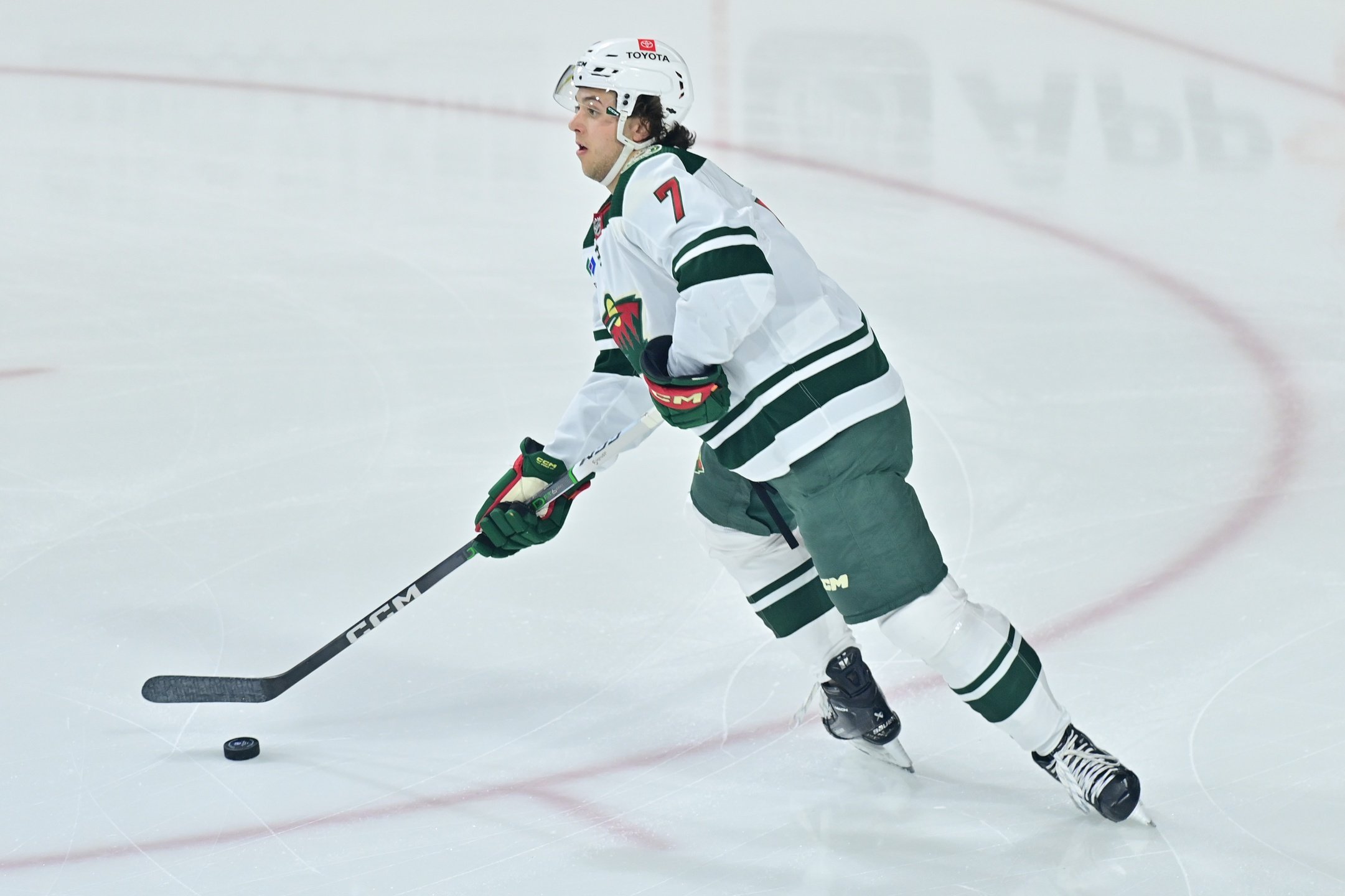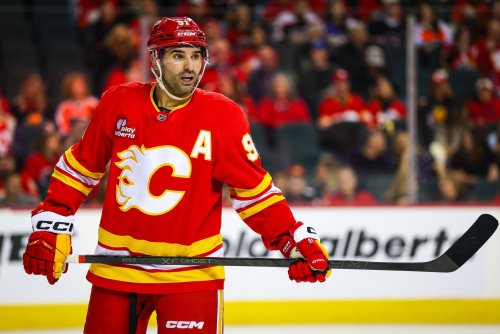
The Minnesota Wild could have two young X-Factor defensemen in the NHL sometime very soon, perhaps as early as April. On the left side, Minnesota could see Zeev Buium, their first-round pick, who The Athletic's Scott Wheeler named the No. 5 prospect in hockey. On the right, there's Brock Faber, the 21-year-old 2024 Calder Trophy runner-up, coming off a 47-point season.
There it is. It's typically good to be cautious when projecting prospects, but these two are so good at such a young age that they're almost sure to spend their Wild careers as the top defenseman on their respective side of the blue line. Minnesota can pencil in "Buium-Faber" as their top defensive pair for the next decade.
Or should they?
The two defensemen do make sense together on paper. Both are brilliant skaters who can log Ryan Suter-ian minutes. Buium is known for his offensive skill set at Denver, while Faber was the Big Ten's Defensive Player of the Year in 2022 and 2023. That's a great match. Peanut Butter and Jelly. Holland Oates and Peter Gabriel. Jonas Brodin and Matt Dumba.
If Buium is who we think he is, and Faber is what he's shown, the Wild can roll them out for 25 to 27 minutes a night without worrying about it. It might be tempting to do that. But are they better off putting those two stud defensemen together or apart long-term?
There's a good case for "apart," believe it or not. For starters, Minnesota can cover the sheer amount of minutes with an elite defenseman on the ice. With Buium and Faber partnering up, the Wild can expect to control the ice for about 40 to 45% of the game. That's great, but what happens if both log 25 minutes per night, mostly separate from each other? Now we're talking something in the 40-to-45-minute range, which means that the time Minnesota is "exposed" without a top defenseman on the ice can drop as low as 25% of the game.
Most teams with a lefty-righty pairing for their top two defensemen tend to put them together, especially in the playoffs. But it's not hard to see teams going the other way to great effect. In the 2022-23 playoffs, the Vegas Golden Knights rolled left-shot Shea Theodore and right-shot Alex Pietrangelo on separate pairings for most of the postseason. The two top-pairing defensemen only skated 18 minutes with each other, in all situations, throughout the entire postseason.
Instead of loading up their top pairing, Vegas ensured they had an elite defenseman on the ice as much as possible. Theodore and Pietrangelo missed a game, but Vegas still managed to have at least one on the ice for 878 out of their 1354 postseason minutes.
That was 64.5% of the games where they didn't have to worry. In the two-thirds of the postseason, when Theodore or Pietrangelo took the ice, Vegas out-scored their opponents by a 62-to-41 margin in all situations and 42-to-24 at 5-on-5. With both healthy and in the lineup, Vegas could count on scoring over 60% of the goals for almost 42 minutes every night.
If all Faber showed us was the stay-at-home, rock-solid defensive defenseman he was for the Golden Gophers, then it would make a lot of sense for him to partner with Buium. But Jared Spurgeon's injury gave Faber room to show he was more than that. Faber proved he can break the team out of the defensive zone and activate in the offense, even at 5-on-5.
If Faber showed that at the pro level without ever having been asked to take the lead offensively before, then why have him take a back seat to Buium? The Wild struggled for most of last season to break out of their zone and spark the offense. Does it make more sense for Minnesota to use two players who can do that simultaneously or maximize the number of minutes with a breakout wizard on the ice? It might be great for one to have a safety valve in the other, but at the end of the day, there's only one puck.
Ultimately, if this is a going concern in two, three, or four years, that's what the hockey world calls an Original Six Problem. Having Buium and Faber both being elite blueliners at the same time means there really isn't much way to go wrong. Stapling them together on the top pair should undoubtedly produce great results. Still, starting games with the premise of keeping them separate (especially knowing both could play together in crunch time) could give the Wild that extra little edge they've been missing in playoff match-ups.
Think you could write a story like this? Hockey Wilderness wants you to develop your voice, find an audience, and we'll pay you to do it. Just fill out this form.
-
 3
3






Recommended Comments
Join the conversation
You can post now and register later. If you have an account, sign in now to post with your account.
Note: Your post will require moderator approval before it will be visible.